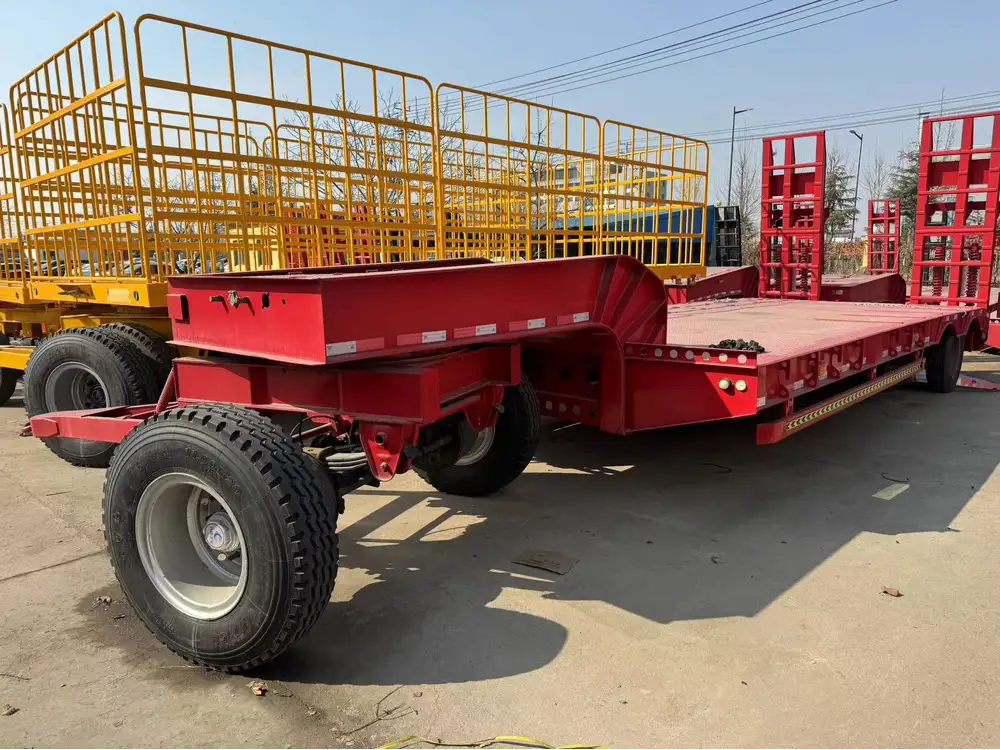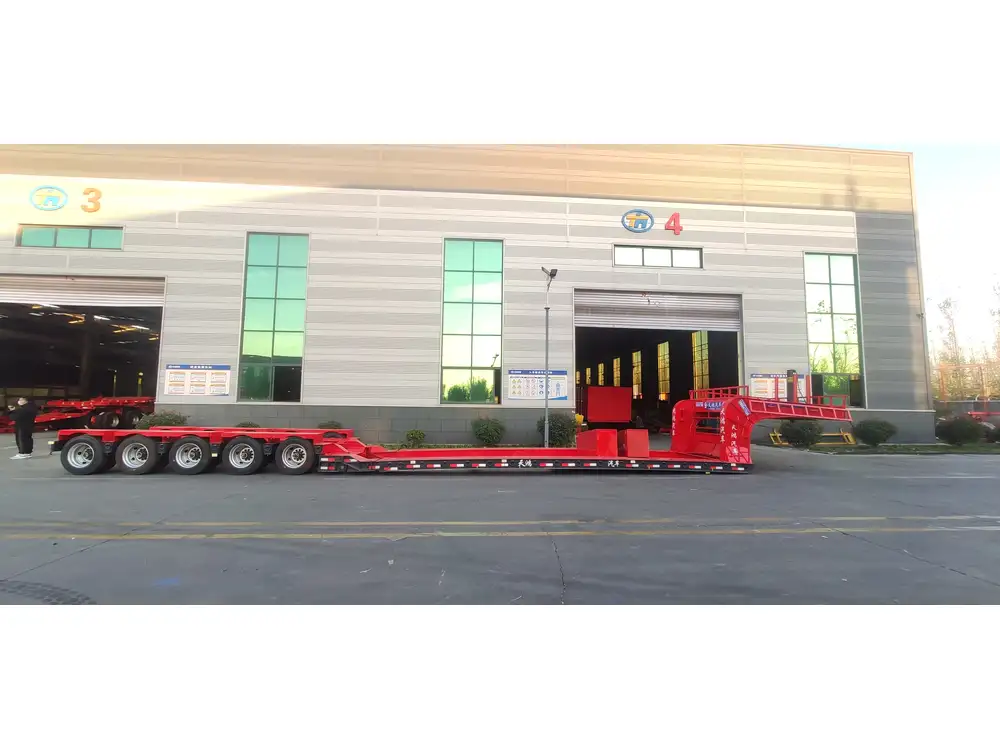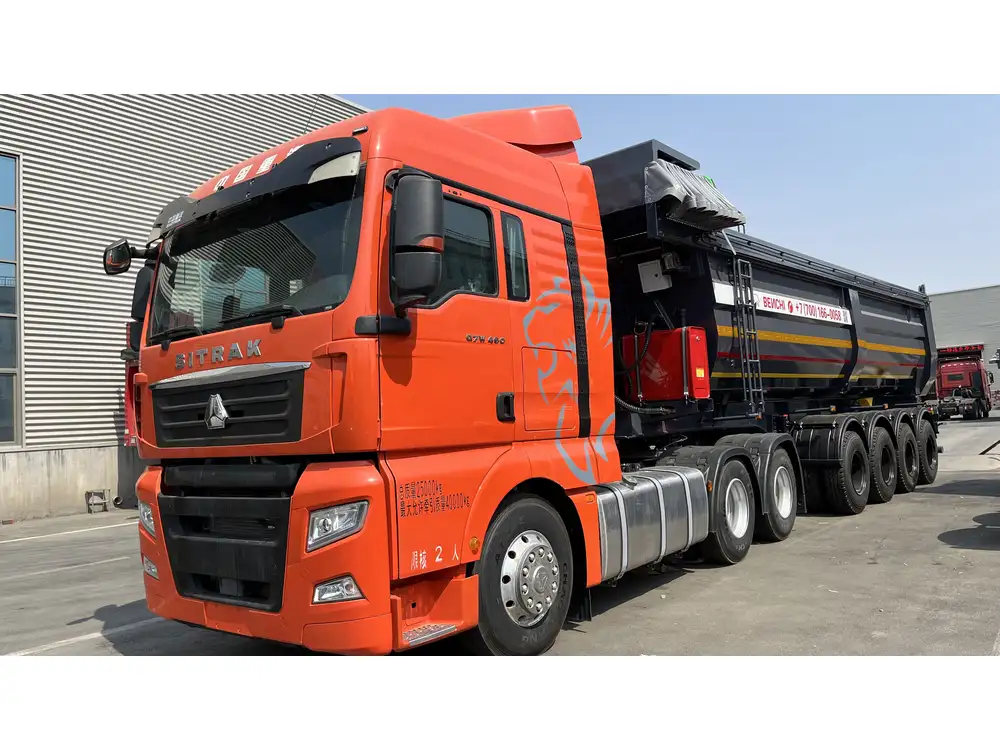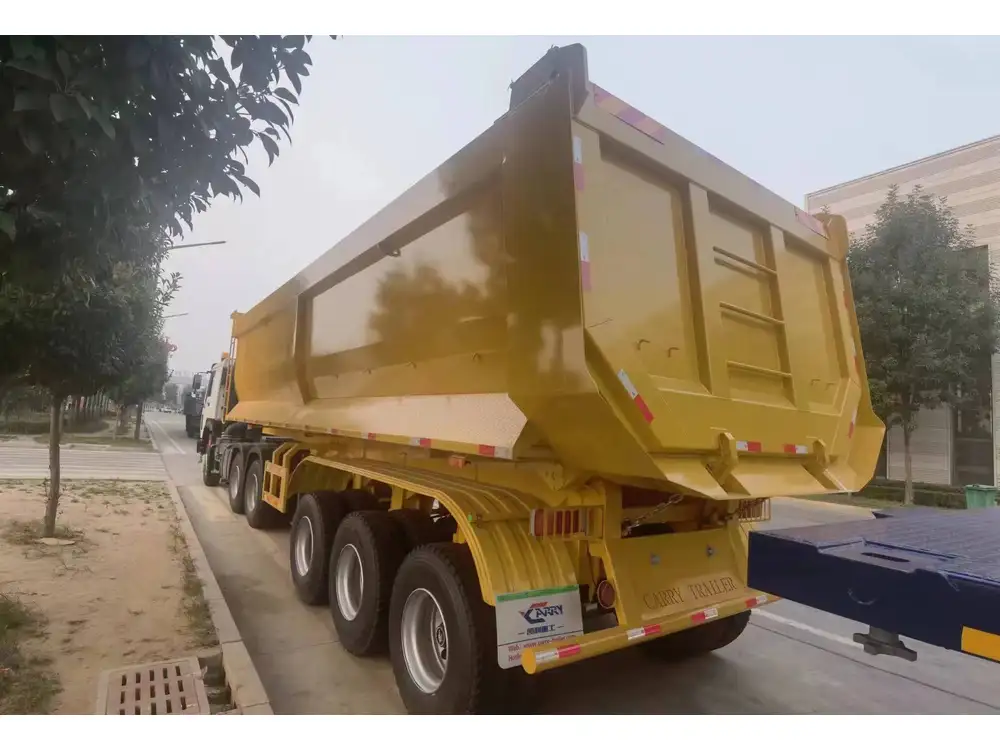In the ever-evolving landscape of transportation logistics, semi-trailers are indispensable assets that enhance freight efficiency and flexibility. As manufacturers, it’s crucial to equip ourselves with an in-depth understanding of the essential information required on a semi-trailer. This knowledge not only facilitates compliance with regulatory requirements but also ensures optimal performance and safety during operation.
1. Basic Identification Information
1.1 VIN (Vehicle Identification Number)
A Vehicle Identification Number (VIN) is the cornerstone of identification for any semi-trailer. This unique 17-character alphanumeric code is crucial for registration, insurance, and tracking purposes. Each VIN provides specifics on the manufacturer, model year, place of manufacture, size, and type of the trailer.

1.2 Manufacturer Details
The manufacturer’s name, address, and contact information should be prominently displayed. This ensures traceability and allows for easier communication regarding recalls or warranty claims.
1.3 Model Specification
Designating the model of the semi-trailer provides users with vital information on the load capacity, dimensions, and intended application. This information is critical for both sales and operational efficiency.
2. Load Capacity Information

2.1 Maximum Gross Vehicle Weight Rating (GVWR)
The GVWR indicates the maximum weight that a semi-trailer can safely carry, including its own weight. It is vital for ensuring safe transportation without overloading, which can lead to dangerous situations on the road.
2.2 Payload Capacity
Payload capacity determines how much cargo a trailer can handle. This figure is derived from subtracting the trailer’s empty weight from the GVWR. Providing transparency regarding these figures can help operators avoid penalties related to overloading.
2.3 Axle Load Ratings
Each axle has a load rating which signifies how much weight it can support. This is paramount for balancing the load evenly across axles, ensuring even tire wear, and maintaining overall vehicle stability.

2.4 Cargo Specifications
Understanding the required cargo specifications ensures that carriers select the appropriate semi-trailer for their needs, optimizing both capacity and safety. Different cargo types—be it liquids, perishables, or heavy machinery—demand tailored solutions.
3. Structural Specifications
3.1 Dimensions
The semi-trailer dimensions, including length, width, and height, must be clearly stated. This helps in assessing compatibility with loading docks, road regulations, and transportation routes.

3.2 Weight Traits
The empty weight of the trailer (tare weight) should be documented, providing necessary context for the GVWR and payload capacities.
3.3 Material Composition
Noting the materials used in the construction of the semi-trailer informs about durability, resistance to corrosion, and overall performance under varying conditions.
4. Regulatory Compliance Information

4.1 Safety Standards Compliance
Every semi-trailer must comply with pertinent safety standards, including those set by the Federal Motor Carrier Safety Administration (FMCSA) as well as state-specific regulations. This section should outline these regulations, enhancing trust among potential clients.
4.2 Load Securement Protocols
Information on required load securement procedures and relevant testing standards should be provided, helping operators reduce the risk of shifting loads and potential accidents.
4.3 Environmental Standards
With increasing emphasis on sustainability, semi-trailer specifications should include any environmental compliance guidelines, particularly emission standards for trailers equipped with auxiliary engines or power units.

5. Maintenance and Service Information
5.1 Recommended Maintenance Schedule
A detailed maintenance schedule increases the operational lifespan of a semi-trailer. This section can include information on inspections, preventative measures, and recommended repair protocols.
5.2 Common Issues and Troubleshooting
Incorporating a troubleshooting guide addressing common issues that may arise with semi-trailers helps operators quickly identify and rectify problems, minimizing downtime and improving overall efficiency.

5.3 Warranty and Service Agreement Details
Clarifying the terms of warranty coverage and available service agreements can significantly influence purchasing decisions. Weighing these aspects leads to better customer satisfaction and trust.
6. Features and Options
6.1 Specialized Equipment
Should the semi-trailer feature specialized equipment such as refrigeration units, hydraulic lifts, or adjustable loading mechanisms, it should be comprehensively detailed. This highlights versatility and adaptability for various transportation needs.

6.2 Customization Options
Offering customization options allows us to fulfill diverse client needs. Information on available upgrades or bespoke options should be clearly articulated, promoting flexibility and consumer appeal.
6.3 Safety Features
Modern semi-trailers are increasingly equipped with advanced safety features. Highlighting these enhancements, such as anti-lock braking systems, load indicators, and electronic stability control, can instill confidence in potential buyers.
7. Cost Information

7.1 Pricing Transparency
Transparency regarding pricing structures, including base pricing, optional add-ons, and estimated operating costs, can significantly influence consumer behavior. By offering detailed breakdowns, we build credibility and trust.
7.2 Financing Options
Providing information on financing options enables potential buyers to better assess their purchasing capabilities, enhancing conversion rates.
7.3 Total Cost of Ownership
Offering insights into the total cost of ownership, incorporating maintenance, fuel consumption, and expected lifespan, presents a well-rounded value proposition to prospective clients.

8. Conclusion
The semi-trailer market is intensely competitive, and being thorough in our documentation can set us apart. By ensuring all this critical information is readily accessible, we not only comply with necessary regulations but also empower our customers in making informed decisions. Each detail—be it structural specifications, compliance info, or customization options—serves as both a selling point and a tool for operational excellence.
Through meticulous attention to detail, organized presentation of data, and a focus on clarity, we can effectively meet user needs and enhance trust in our brand. With this foundational understanding of the essential information required on a semi-trailer, we can position ourselves as industry leaders, ready to tackle both current demands and future challenges in transportation logistics.



